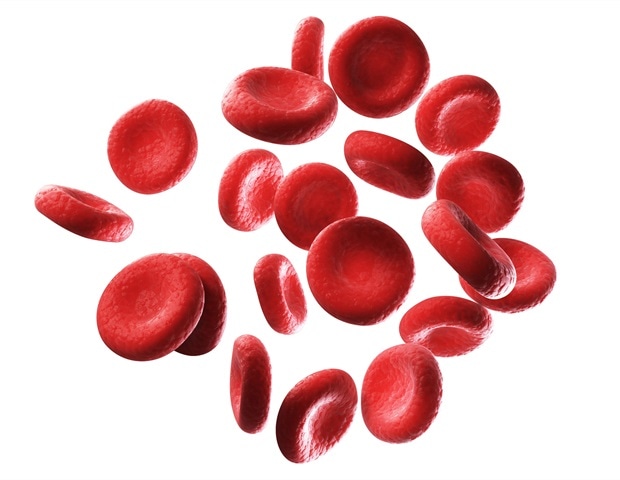Hypothermia can preserve neuron health following brain injury, but complications from external cooling make it less promising therapeutically. Recent evidence suggests that activating a specific neuron population triggers a…
Blog
-

Lab-grown embryo models mimic natural formation of blood and heart cells
University of Cambridge scientists have used human stem cells to create three-dimensional embryo-like structures that replicate certain aspects of very early human development – including the production of blood stem cells.
Human…
Continue Reading
-

Who is really at risk of eating disorders? New UK study reveals overlooked groups
A major UK cohort study uncovers widespread eating disorder symptoms among diverse adolescents, exposing urgent gaps in recognition, cultural care, and long-held assumptions about who is truly at risk.
Study: The Prevalence and…
Continue Reading
-

SpaceX launches 11th test flight of its mega Starship rocket : NPR
SpaceX’s mega rocket Starship makes a test flight from Starbase, Texas, Monday, Oct. 13, 2025.
…Continue Reading
-

Trial examines slow-tempo music as a strategy to reduce delirium in critically ill older adults
A multi-center randomized controlled trial with critically ill adults aged 50 years and older admitted to intensive care units (ICUs) found that twice-daily slow-tempo music (60 to 80 beats per minute) did not shorten the duration…
Continue Reading
-

Why Kate Middleton restricts kids from using smartphones?
Real reason behind Kate Middleton’s restriction on kids’ mobile usage Kate Middleton reportedly has banned kids from using smartphones because of a deeper and painful reason.
As per a report by Radaronline.com, the…
Continue Reading
-

Study validates AI models for preemptive sepsis care in pediatrics
Sepsis, or infection causing life-threatening organ dysfunction, is a leading cause of death in children worldwide. In efforts to prevent this rare but critical condition, researchers developed and validated AI models that…
Continue Reading
-

Amazon and TikTok are helping Estee Lauder reinvent itself, Goldman Sachs says
By Bill Peters
Goldman analysts upgrade Estee Lauder’s stock, saying a sales rebound could happen sooner than investors think
Goldman Sachs analysts see “an upcoming fundamental inflection” for Estee Lauder as the cosmetics maker tries to turn its fortunes around.
Cosmetics giant Estee Lauder Cos.’s rebound could take hold sooner than expected, Goldman Sachs analysts said on Monday, as trends firm up in the U.S. and China and the company puts more focus on newer and higher-end products and sales through TikTok and Amazon.
The Goldman analysts upgraded shares of Estee Lauder (EL) to a buy rating. That upgrade helped send the stock 5.8% higher on Monday.
The analysts, in a research note, said they saw “an upcoming fundamental inflection” for Estee Lauder, which is known for brands like Clinique and Aveda, along with its namesake products. They added that the company could return to sales growth as soon as its fiscal first quarter, which ran through last month.
“Ultimately, we believe investors need evidence of sustainable toplinegrowth and share gains, and we believe this could happen earlierthan expected (possibly FQ1), and with continued progress on improved profitability, this should drive a re-rating in the stock,” the analysts said.
Higher costs of living, competition, tariffs and an online ecosystem that has sped up trend cycles have weighed on beauty-industry heavyweights. Estee Lauder this year has slashed thousands of jobs and announced plans to accelerate new-product development and take steps to be a bigger player in more upscale beauty products.
In February, Chief Executive Stéphane de La Faverie said that Estee Lauder had been “too slow to seize new opportunities” and that the company planned to deliver nearly a third of its product launches in under 12 months. In August, he called the moves “the biggest organizational transformation that we have done in our history.”
However, management in August said it expected better sales trends for mainland China – a key market that the Goldman analysts said makes up around a quarter of Estee Lauder’s sales – and at places like airport duty-free shops and cruise-ship terminals. Those trends were reasons to be optimistic, the analysts said.
“While there has been some debate around the elevated competition from local brands,” the analysts said of the backdrop in China, “we believe rising urban consumption should support [Estee Lauder’s] growth and the steps it is taking as part of its strategic vision should support further market share gains ahead.”
The analysts also said that while Estee Lauder’s business in North America lost a lot of ground over recent years, it is more diversified today. They said the company has less than one-third of its overall exposure to department stores. The rest, they said, was spread out across Amazon, Estee Lauder’s direct-to-consumer business, and other stores.
That current composition of its business, the analysts said, “should allow the company to reach its consumers in a more effective manner.”
The analysts noted that Estee Lauder first launched Clinique on Amazon in the U.S. last year, which has helped that brand pick up a bigger slice of the market. They said Estee Lauder currently has 11 brands on Amazon in the U.S. The company also recently launched two brands on TikTok Shop.
“Notably, [management] views these platforms as an important part of its new media model wherein these platforms serve the purpose of amplifying demand for its brands as consumers predominantly search for beauty products across these platforms,” the analysts said.
“While department stores will likely get even smaller over time as other growth channels pick-up in the mix,” they added, “we believe department stores remain an important channel to drive trial and certain categories will likely thrive in brick-and-mortar, such as fragrances and luxury skincare.”
-Bill Peters
This content was created by MarketWatch, which is operated by Dow Jones & Co. MarketWatch is published independently from Dow Jones Newswires and The Wall Street Journal.
(END) Dow Jones Newswires
10-13-25 2011ET
Copyright (c) 2025 Dow Jones & Company, Inc.
Continue Reading
-

Intel, AMD Detail x86 Improvements To Keep Their Chips Relevant
The key technical milestones achieved as part of Intel’s and AMD’s work on the x86 Ecosystem Advisory Group include new performance, security and reliability improvements coming to the x86 instruction set architecture, the…
Continue Reading
-

Singapore warns of slower 2026 growth after third-quarter GDP beats expectations
An aerial view of Singapore’s Marina Bay Street Circuit on Sept. 17, 2024.
Roslan Rahman | Afp | Getty Images
Singapore’s economy expanded faster than expected in the third quarter, even as the country’s central bank warned that growth is likely to slow in 2026.
Gross domestic product rose 2.9% year on year in the three months through September, the Ministry of Trade and Industry said Tuesday.
That beat economists’ forecasts for a 1.9% increase, though it marked a slowdown from a revised 4.5% expansion in the second quarter.
On a seasonally adjusted, quarter-on-quarter basis, the economy expanded by 1.3%, easing slightly from 1.5% in the previous quarter.
Manufacturing was the main drag on growth, flattening after a 5% expansion in the second quarter. The construction sector also softened, rising 3.1% year on year compared with 6.2% in the prior quarter.
“Growth was weighed down by output declines in the biomedical manufacturing and general manufacturing clusters, even as output in the other manufacturing clusters expanded,” MTI said in a statement.
The slowdown comes as Singapore’s central bank left its policy settings unchanged, maintaining its stance from July.
The Monetary Authority of Singapore said that GDP growth is expected to moderate as activity “normalises” in trade-related sectors.
Global investment in artificial intelligence is expected to support Singapore’s manufacturing sector, the central bank said, while construction and financial services should benefit from infrastructure spending and accommodative financial conditions.
“In 2026, GDP growth is projected to slow in line with external developments to a near-trend pace, such that the output gap narrows to around 0%,” MAS said in a statement.
Exports from Singapore recorded an 11.3% decline in non-oil domestic exports in August, the sharpest drop since March 2024.
Non-oil exports to Indonesia, the U.S. and China fell in August, but rose to the European Union, Taiwan and South Korea, government data showed.
Singapore’s exports to the United States dropped by 28.8% year on year in August, following a 42.8% fall in July.
—This is breaking news, please check back for updates.
Continue Reading
